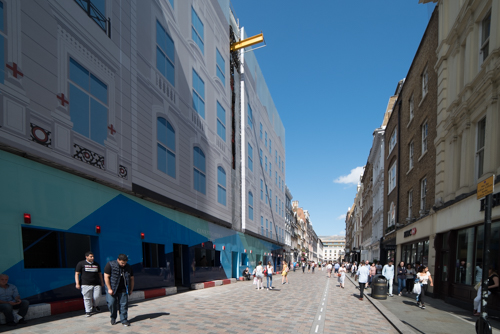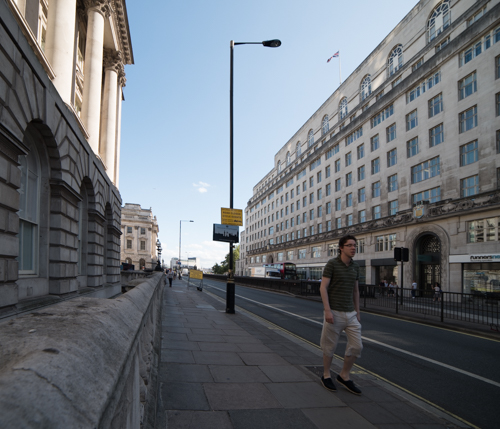For this exercise I took a number of shots both with lines converging to a point in the frame as well as images with lines flat (or as flat as possible) to the sensor. In some cases the perspective was adjusted in post processing to correct for the tilting of the lens.
All pictures were taken with prime lenses on a DSLR in programme mode and auto-ISO turned on. The camera made its own exposure decisions, but the lenses were focused manually.

Picture 1

Picture 2

Picture 3

Picture 4
Pictures 1 and 3 are very similar in the sense there are strong lines both from the bottom and top of the picture that lead the eye towards infinity. There are a number of elements on these pictures (people and objects) that fall along the path of the lines, but while the eye stops temporarily to examine these objects, it quickly continues to follow the lines, in both cases towards infinity, where there are no special features for the eyes to stop, for which they move back along the same lines to where they started. Picture 2 is somewhat different from the other ones in which the leading lines are stronger (as the camera was close to them when I took the picture) and in this case lead the eye to a person walking on the top right hand side of the frame. This person is prominent enough to allow the eyes to move to him and stay there for some time, but he does not fall exactly on the path of the lines, for which the eye continues its trajectory towards infinity.
Picture 4 was also taken at an angle to the focal plane and there are converging lines at the side and diagonals crossing the frame. But nearly all these lines are encapsulated by horizontal lines at the top and the bottom as well as by the dark frame at the sides and the bottom, which make a good job of keeping the eye focusing on the middle of the picture. There is one exception to this: the lighter area of the concrete wall to the top centre left of the picture contains a line which continues from one of the diagonals and leaves the frame, through which the eye finds a way of escaping what otherwise would be a very tight framing.

Picture 5

Picture 6

Picture 7
The next lot of pictures was taken with lines running parallel to the focal plane in as much as possible. In pictures 5 an 6 the main lines are horizontal and they primarily serve the purpose of segmenting the frame, but are not the main subject. The segmentation of the person’s shadow in picture 5 by the horizontal lines accentuates the effect and makes the shadow appear to be longer than what it is. There is also a diagonal line created by the staircase wall on the right hand side that contains the picture and bounces the eye back to the shadow. In picture 6, the line nicely divides the frame alongside the two dots, to which the eye moves back and forth.
Picture 7 contains a nice combination of vertical, horizontal and diagonal lines. Unlike that of picture 5, the diagonal here starts from a prominent part of the picture and divides the frame in two parts that contain material visual information. The eye follows the trajectory of the vertical becoming diagonal and stops right at the edge of the frame where there is a person holding his mobile phone. This person is of a dark complexion and being partially in shadow creates a nice contrast to the sunlit concrete wall at the back of his head. In this case, the person and its location saves the picture, which otherwise would have been just a collection of lines leading nowhere.
Lovely stuff!
Picture 5 and 7 are really nice indeed!
LikeLike
PS Would be great to have some EXIF data for each shot maybe? (And possibly a note under each shot to know which primes you used?)
LikeLike